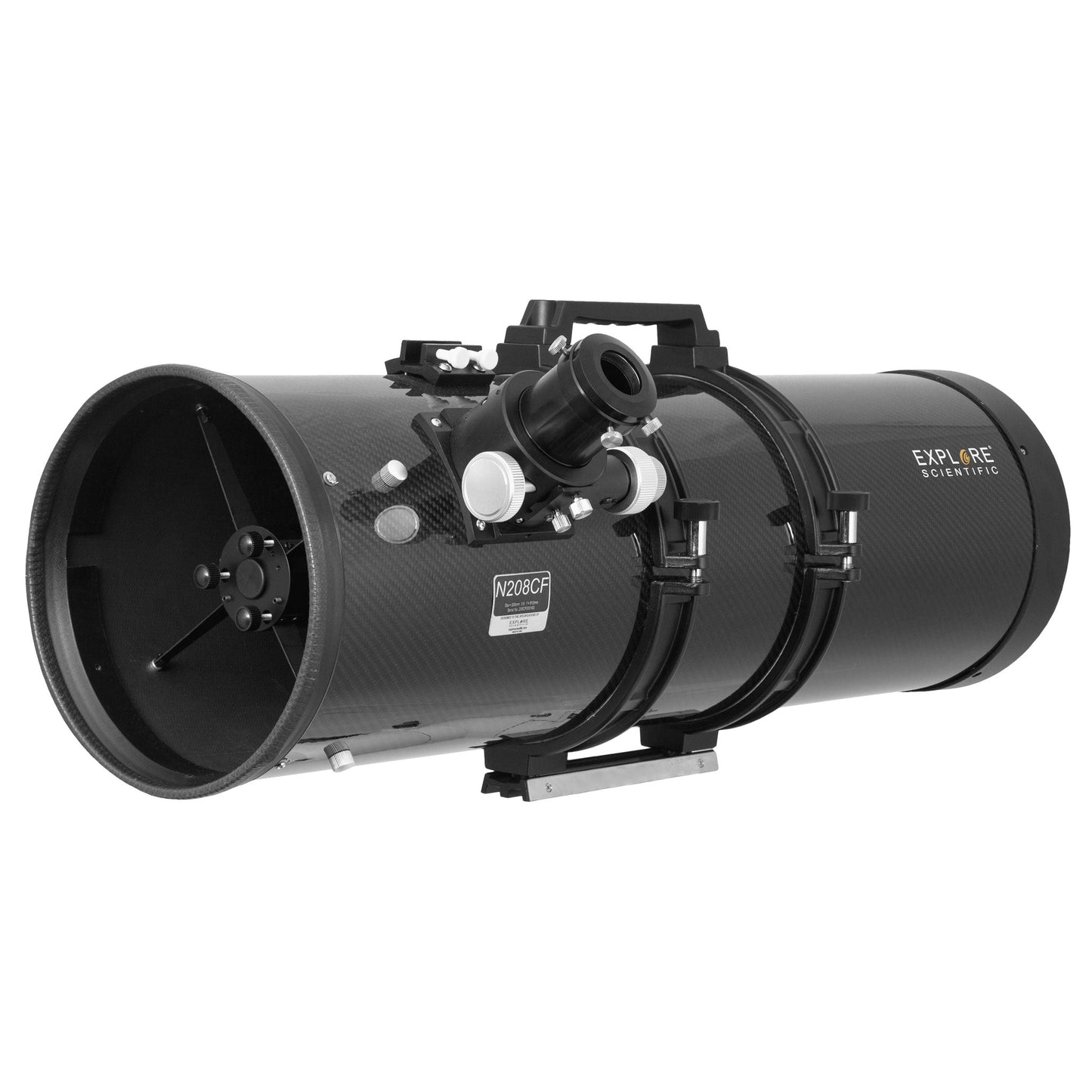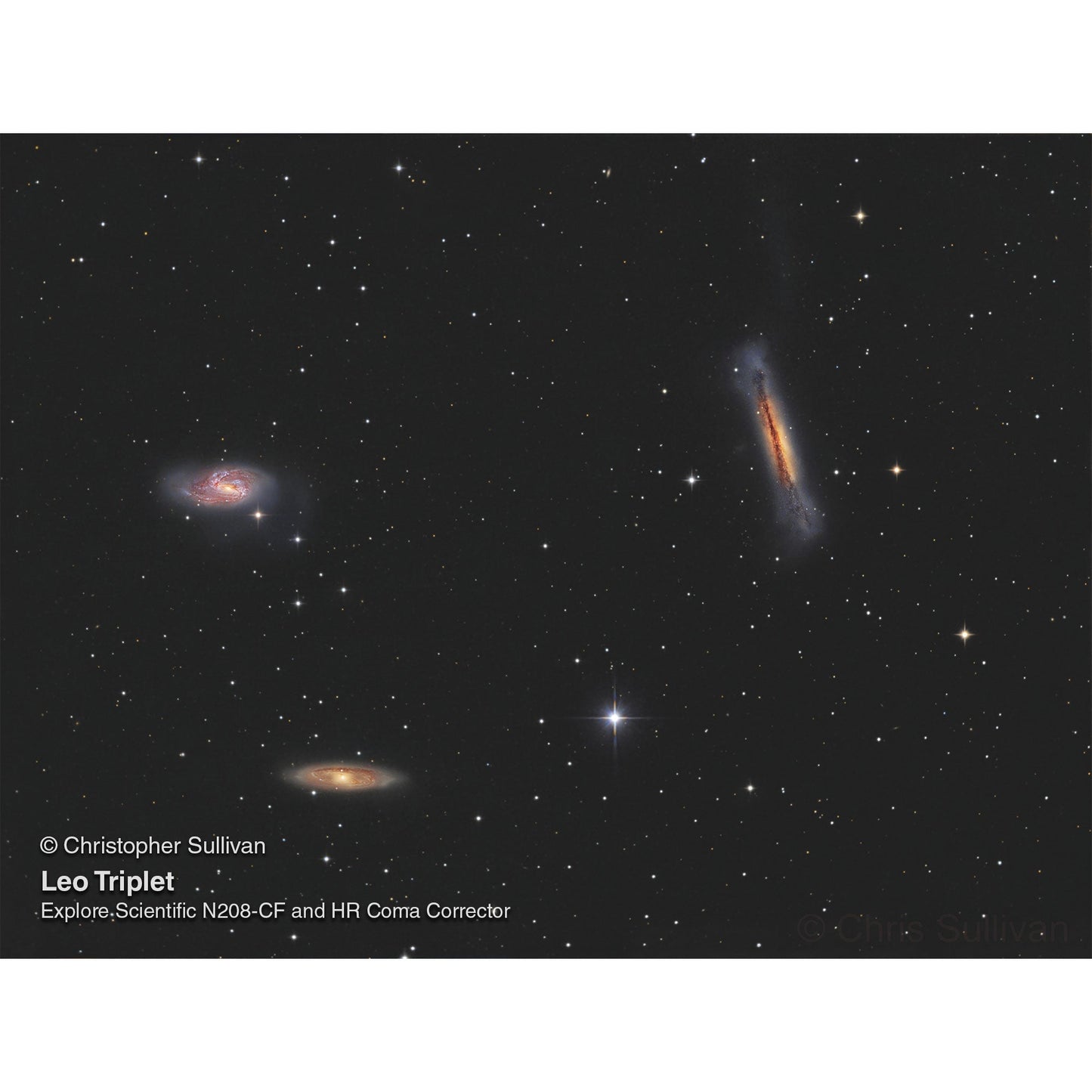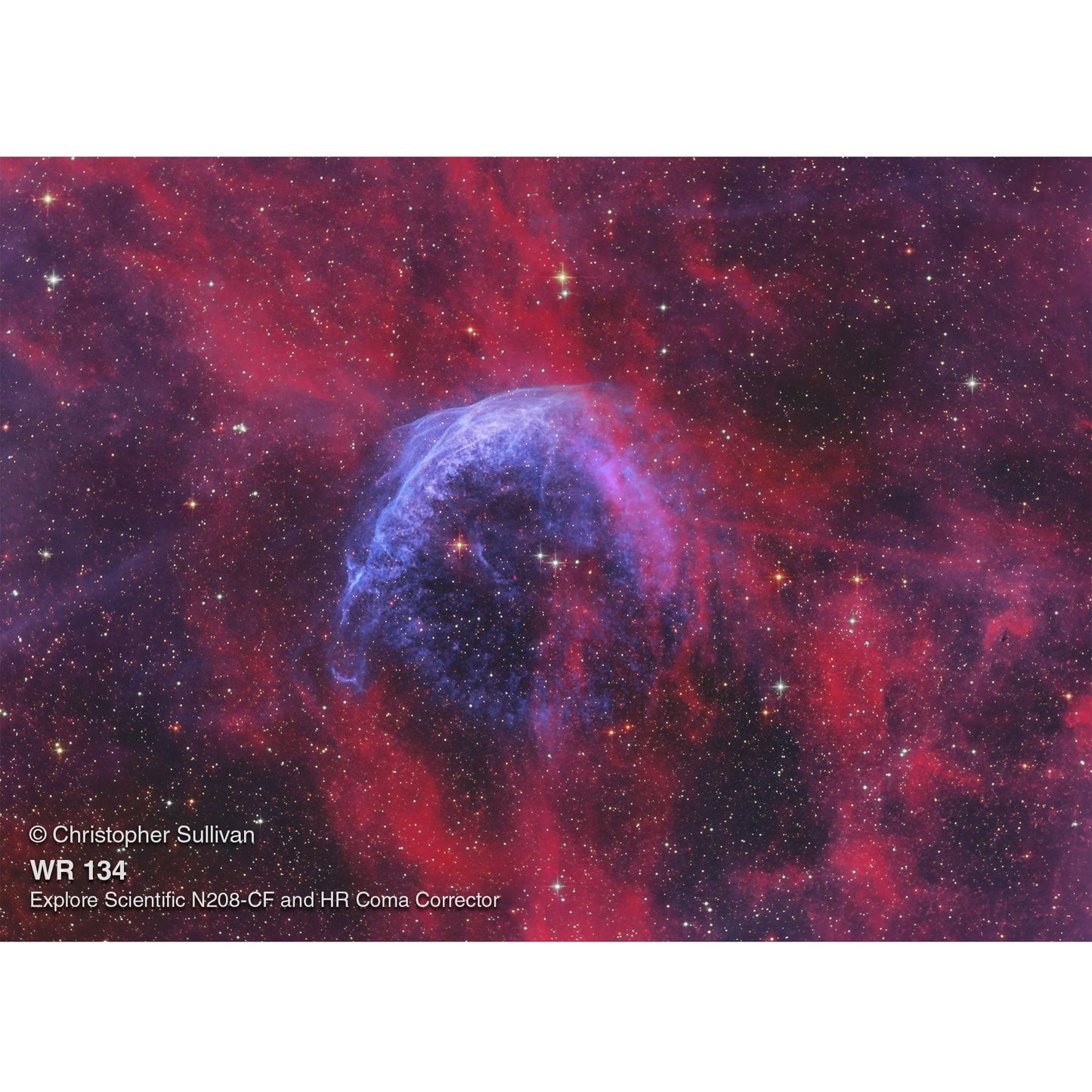Explore Scientific N208CF Newtonian Telescope - Astrograph Edition - N208CF-01
Explore Scientific N208CF Newtonian Telescope - Astrograph Edition - N208CF-01
Couldn't load pickup availability
Discontinued Item
*Note that this is a discontinued product. This legacy information is for reference only.
Description
The Explore Scientific N208CF Newtonian - Astrograph Edition offers large aperture and super-wide field at f3.9. Field tested and updated by astrophotographers, this 208mm f/3.9 Newtonian produces tight, round stars with the recommended HR Variable Coma Corrector. This telescope assembly with its Carbon Fiber tube has very low expansion characteristics to hold its focus position, is also very lightweight, and a lightweight telescope performs better on any mount that it is placed on.
The very fast f-ratio f/3.9 Parabolic Newtonian with Borosilicate Secondary and Low Expansion H-PZ33 Primary Mirror optics provides a focal length of 812mm. The already very bright visual images is further enhanced with 97% reflectivity EMD coatings. No-tool 3-point push-pull collimatable secondary holder adjustments and no tool adjustments for the "clipless" primary mirror holder cell have locks to keep optics aligned for the best images.
Precise focusing is achieved with the Two Speed 2-inch Rack & Pinion Focuser with 50mm Extension Tube, and 1.25-inch Adapter.
Other features include a finder scope base to mount an optional correct image Explore Scientific 8x50 Illuminated Polar Right Angle Finder Scope or the correct image Explore Scientific 8x50 Straight Through Illuminated Viewfinder.
The Explore Scientific N208CF Newtonian is handled and supported by metal Cradle Rings with a contoured metal Handle/Grip that is slotted to allow a 1/4x20 attachment bolt for piggyback attachment of a DSLR. The 45mm Wide, 203mm Long Dovetail Plate (Vixen-style) mounts to fit a huge range of mounts from Explore Scientific and other brands. This dovetail plate has adjustment bolts with locks to adjust for precision cone angle adjustments.
The package includes a padded, top-loading Soft Carrying Case to protect the optical tube assembly while transporting the instrument to your backyard or your favorite dark sky site for an imaging run or deep sky visual observations.
Specs
| Item Number | N208CF-01 |
| Parabolic primary Mirror Diameter | 208mm |
| Secondary Mirror Diameter (M.A.) | 72mm |
| Focal Length | 812mm |
| Focal Ratio | f/3.9 |
| Resolving Power | .6 arc seconds |
| Optical Tube Assembly Weight with rings | 19.1lb |
| Dovetail Plate | 45mm Wide (Vixen-style) |
| Material Primary mirror | Special low expansion H-PZ33 |
| Material Secondary mirror | Borosilicate-glass with low thermal expansion, individually matched to main mirror |
Exploring
Exploring With the N208CF Newtonian - Astrograph Edition
"The N208CF is an amazing scope. It really is a quality scope, both in optical quality and build quality. Every bit of it feels absolutely solid. It’s easy to collimate. After performing star tests, I saw no visible sign of optical aberrations. There is no spherical aberration, and optics do not appear to be pinched at all. I primarily use mine for astrophotography, but I have to say I was blown away when I saw the Trapezium of the Orion Nebula through an eyepiece with this scope. It looked like a 15” exposure at ISO1600. The nebulosity was so well defined, it took my breath away. This is the largest scope I’ve ever looked through, though. Using the HR Coma Corrector, these are the kind of results you can expect as an imager when capturing with this scope."
-Nikkolai Davenport
Science
The Science Behind the N208CF Newtonian - Astrograph Edition
Sir Isaac Newton invented the first functional reflecting telescope, called the "Newtonian Telescope" in 1668. Newton built his reflecting telescope because he suspected it could prove his theory that white light is composed of a spectrum of colors. Newton theorized correctly that a mirror lens would not split white light into a spectrum of colors "called chromatic aberration", like refractive lenses do. The reason that simple refractive lenses split white light into separate colors is that the image forming lens is tapered on all sides, effectively creating a triangular prism at the edges of the lens and thus disperses white light into its spectral components creating a rainbow of colors (red has a shorter wavelength than violet) because the light is deflected by the prism at different angles. Newton's experiments led us to have a greater understanding of the characteristics of the electromagnetic spectrum.
Since Newton's time there have been advances in refractor optics to nearly eliminate chromatic aberration (see Explore Scientific Air-Spaced Triplet ED APO Telescopes) . But the Newtonian reflector telescope has no such aberration.
Essentials
Manuals
Recommended Accessories
- HR Variable Coma Corrector
- 8x50 Illuminated Polar Right Angle Finder Scope
- EXOS2-GT Equatorial Mount with PMC-Eight GoTo System
Warranty
Limited USA One Year Warranty when product is registered within 60 days of purchase. Click Here to register. Eligible for no fault Explore Care with an Explore Alliance Membership.
CA Residents Prop 65 WARNING(S)
Share
















